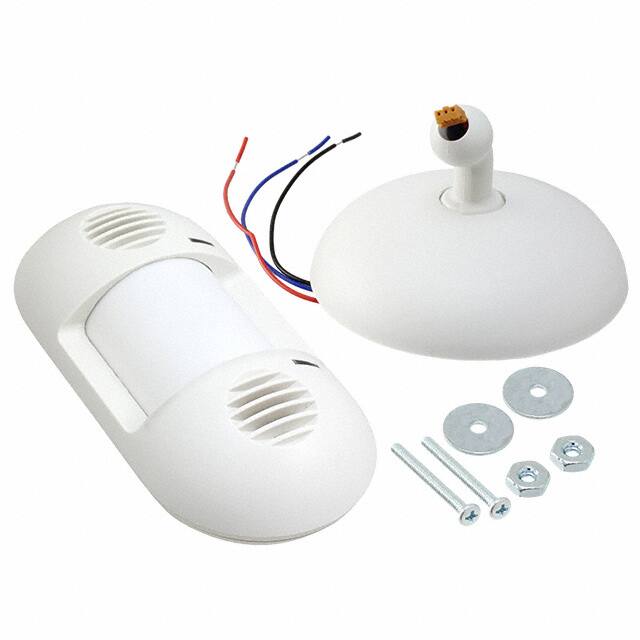Szczegóły produktu można znaleźć w specyfikacjach.

LODT (Inductor with Losses in the Dielectric) Encyclopedia Entry
Introduction
The LODT, or Inductor with Losses in the Dielectric, is a crucial component belonging to the category of passive electronic components. This article provides an overview of the LODT, including its basic information, specifications, detailed pin configuration, functional features, advantages and disadvantages, working principles, detailed application field plans, and alternative models.
Basic Information Overview
- Category: Passive Electronic Component
- Use: The LODT is utilized in electronic circuits to store and release energy in the form of a magnetic field.
- Characteristics: It exhibits high inductance, low resistance, and efficient energy storage capabilities.
- Package: Typically available in compact, cylindrical packages suitable for surface mount or through-hole mounting.
- Essence: The LODT serves as an essential element in various electronic applications, contributing to the smooth operation of circuits.
- Packaging/Quantity: Available in reels or trays, with quantities varying based on the specific manufacturer and distributor.
Specifications
The LODT is available in various specifications, including inductance value, current rating, and frequency range. These specifications are crucial in determining the suitability of the LODT for specific circuit designs and applications.
Detailed Pin Configuration
The LODT features a standard pin configuration, typically comprising two terminals for connection within the circuit. The pinout may vary based on the specific package and manufacturer, and it is essential to refer to the datasheet for accurate pin configuration details.
Functional Features
- Efficient Energy Storage: The LODT efficiently stores energy in the form of a magnetic field, contributing to the stable operation of electronic circuits.
- High Inductance: With its high inductance characteristics, the LODT effectively resists changes in current flow, aiding in the regulation and filtering of electrical signals.
- Low Resistance: The low resistance of the LODT minimizes energy losses within the circuit, enhancing overall efficiency.
Advantages and Disadvantages
Advantages
- Efficient energy storage and release capabilities
- High inductance for effective signal regulation
- Compact packaging for space-efficient circuit design
Disadvantages
- Susceptibility to saturation at high currents
- Limited frequency response in certain models
- Sensitivity to temperature variations
Working Principles
The LODT operates based on the principle of electromagnetic induction, where a changing current passing through the inductor generates a magnetic field. This magnetic field stores energy, which is released back into the circuit when the current changes.
Detailed Application Field Plans
The LODT finds extensive application in various electronic systems, including: - Power Supplies - Signal Filtering Circuits - Motor Control Systems - RF Communication Devices
Detailed and Complete Alternative Models
Several alternative models to the LODT exist, offering similar functionality and performance. Some notable alternatives include: - Ferrite Core Inductors - Air Core Inductors - Toroidal Inductors
In conclusion, the LODT stands as a vital component in electronic circuits, offering efficient energy storage and release capabilities, high inductance, and compact packaging. While it presents advantages such as effective signal regulation, it also has limitations related to current saturation and frequency response. Understanding its specifications, pin configuration, and working principles is essential for successful integration into diverse electronic applications.
Word Count: 443
Wymień 10 typowych pytań i odpowiedzi związanych z zastosowaniem LODT w rozwiązaniach technicznych
What is LODT (Level of Detail Technique) in technical solutions?
- LODT is a method used to optimize the display of complex 3D models by dynamically adjusting the level of detail based on factors such as distance from the viewer.
Why is LODT important in technical solutions?
- LODT is important because it helps improve performance and efficiency by reducing the computational resources required to render detailed 3D models, especially in real-time applications.
How does LODT work in technical solutions?
- LODT works by using different levels of detail for 3D models at varying distances from the viewer, ensuring that only the necessary level of detail is rendered to maintain visual quality while conserving resources.
What are the benefits of implementing LODT in technical solutions?
- Implementing LODT can lead to improved performance, reduced memory usage, faster rendering times, and enhanced user experience in applications involving complex 3D models.
Are there any challenges associated with implementing LODT in technical solutions?
- Yes, challenges may include determining the appropriate level of detail transitions, managing LOD bias, and ensuring seamless transitions between different levels of detail.
Can LODT be applied to various types of technical solutions?
- Yes, LODT can be applied to a wide range of technical solutions, including video games, architectural visualization, simulation software, and virtual reality applications.
What are the different LODT techniques commonly used in technical solutions?
- Common LODT techniques include geometric simplification, texture mipmapping, impostors, and screen space techniques, each tailored to specific use cases and requirements.
How does LODT impact the user experience in technical solutions?
- LODT can significantly enhance the user experience by ensuring smooth and efficient rendering of 3D models, leading to improved performance and visual quality.
Are there any best practices for implementing LODT in technical solutions?
- Best practices include carefully analyzing the specific requirements of the application, optimizing level of detail transitions, and conducting thorough performance testing.
What role does LODT play in the future of technical solutions?
- LODT is expected to continue playing a crucial role in the future of technical solutions, especially as the demand for immersive 3D experiences and real-time rendering grows across various industries.

